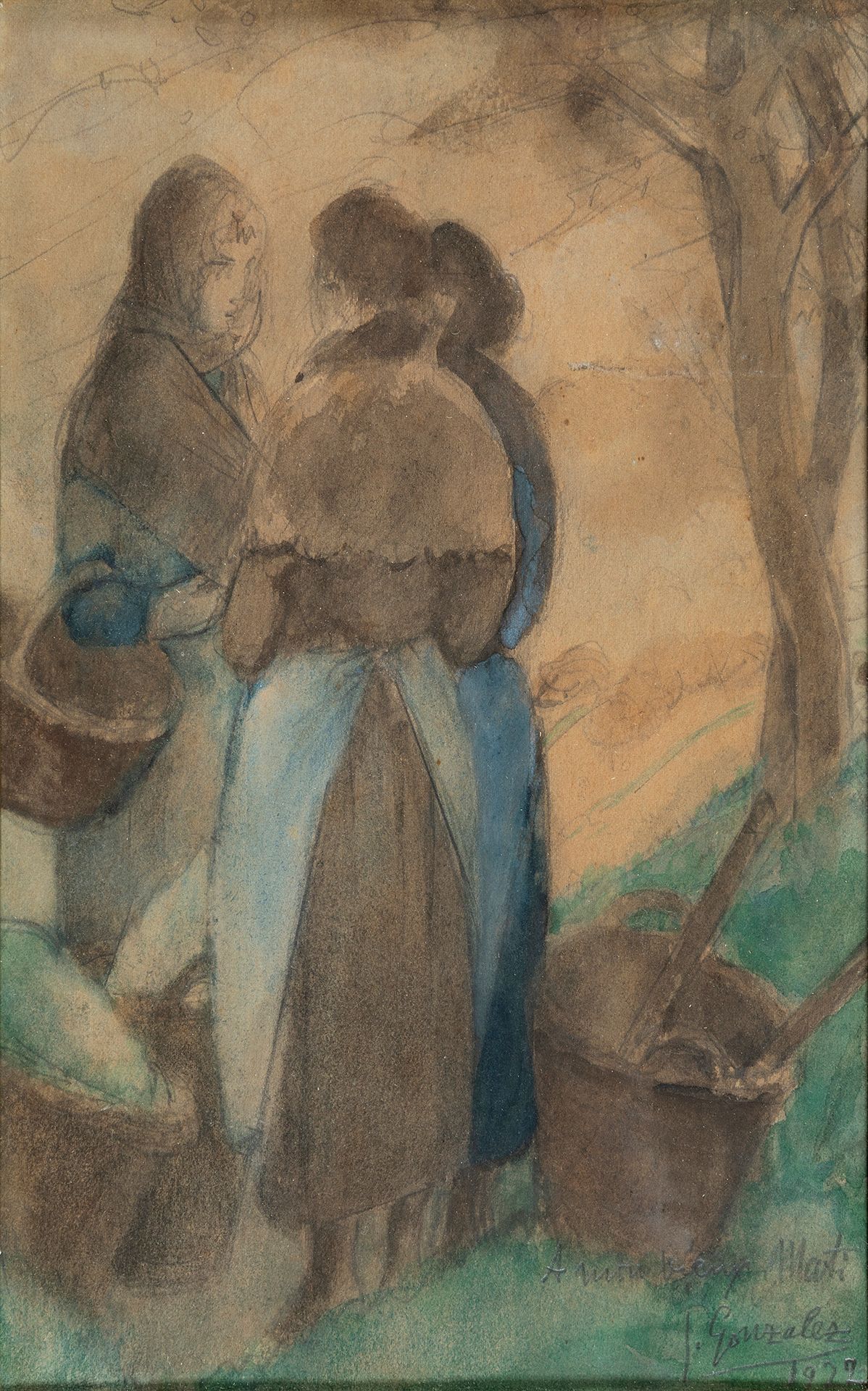Description
JULIO GONZÁLEZ PELLICER (Barcelona, 1876 - Arcueil, France, 1942). "Untitled", Le Villars, Saone et Loire, 1922. Watercolour and charcoal on paper. Signed and dated in the lower right area, located on the back. Measurements: 20 x 15 cm; 37 x 31 cm (frame). Julio González was born into a family of goldsmiths, learning the trade as a child. Later he studied Fine Arts at La Lonja in Barcelona. In 1900 he went with his family to Paris, where he frequented the artistic circles and was in contact with Picasso, Gargallo and Brancusi, among others. Around 1910 he began to work on embossed metal masks in a style marked by naturalistic and symbolist features and by a new conception of the human figure, with synthesised volumes and lines. During these years González began to take part in the Parisian salons, specifically the Salon d'Automne, the Salon des Indépendants and the Salon de la Société Nationale des Beaux-Arts. In 1920 he opened his own forge and two years later made his individual debut at the Povolovsky gallery in Paris. At the end of the 1920s he began to develop his first sculptures in wrought iron, a material that until then had been considered merely decorative. During the 1930s his work became more abstract and the first spatial constructions appeared. After a long list of participations in solo and group exhibitions such as the Spanish Art exhibition at the Jeu de Paume Museum (1936) and the Spanish Pavilion at the Universal Exhibition in Paris (1937), at the outbreak of the Second World War his work, as a result of the shortage of iron, focused on a new material, plaster, and on drawings with war themes. González is represented at the Centre Georges Pompidou in Paris, the Reina Sofía in Madrid, the IVAM in Valencia and the MoMA in New York, among many others.
46
JULIO GONZÁLEZ PELLICER (Barcelona, 1876 - Arcueil, France, 1942). "Untitled", Le Villars, Saone et Loire, 1922. Watercolour and charcoal on paper. Signed and dated in the lower right area, located on the back. Measurements: 20 x 15 cm; 37 x 31 cm (frame). Julio González was born into a family of goldsmiths, learning the trade as a child. Later he studied Fine Arts at La Lonja in Barcelona. In 1900 he went with his family to Paris, where he frequented the artistic circles and was in contact with Picasso, Gargallo and Brancusi, among others. Around 1910 he began to work on embossed metal masks in a style marked by naturalistic and symbolist features and by a new conception of the human figure, with synthesised volumes and lines. During these years González began to take part in the Parisian salons, specifically the Salon d'Automne, the Salon des Indépendants and the Salon de la Société Nationale des Beaux-Arts. In 1920 he opened his own forge and two years later made his individual debut at the Povolovsky gallery in Paris. At the end of the 1920s he began to develop his first sculptures in wrought iron, a material that until then had been considered merely decorative. During the 1930s his work became more abstract and the first spatial constructions appeared. After a long list of participations in solo and group exhibitions such as the Spanish Art exhibition at the Jeu de Paume Museum (1936) and the Spanish Pavilion at the Universal Exhibition in Paris (1937), at the outbreak of the Second World War his work, as a result of the shortage of iron, focused on a new material, plaster, and on drawings with war themes. González is represented at the Centre Georges Pompidou in Paris, the Reina Sofía in Madrid, the IVAM in Valencia and the MoMA in New York, among many others.
